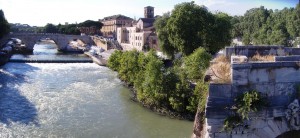![]() More from the trenches in the sunflower wars. A few weeks ago I said I would be keeping an eye on the controversy over the possibility of a separate site of domestication for sunflower in Mexico, additional to the conventional locale in eastern North America. Now Hannes Dempewolf alerts me to an exchange of letters in PNAS that continues the discussion.
More from the trenches in the sunflower wars. A few weeks ago I said I would be keeping an eye on the controversy over the possibility of a separate site of domestication for sunflower in Mexico, additional to the conventional locale in eastern North America. Now Hannes Dempewolf alerts me to an exchange of letters in PNAS that continues the discussion.
My earlier post was prompted by a paper by David Lentz (University of Cincinnati) and others which presented a range of archaeological, linguistic, ethnographic and ethnohistoric evidence for the domestication of sunflower in Mexico by 2600 BC. 1 Now that evidence comes under fire.
Cecil Brown, an anthropologist at Northern Illinois University, leads off. 2 He points out that the local names for sunflower in 11 contemporary native Mexican languages which “do not phonologically resemble Spanish words,” and which Lentz et al. therefore quoted as evidence for local domestication, are mostly descriptive terms. “Such semantically transparent names are typically used as alternatives to loanwords to designate newly encountered introduced things.”
Then Loren Rieseberg (University of British Columbia) and John Burke (Indiana University) take on the molecular evidence. 3 Lentz had said that previous molecular studies had not included indigenous Mexican cultivars, but Rieseberg and Burke say that two samples purchased in markets in Jalisco have been analyzed, and were inferred to have arisen from wild populations in the eastern US.
Third up, Bruce Smith from the Smithsonian tackles the archaeology. 4 He contends that out of more than 100,000 expertly identified archaeobotanical specimens from throughout Mesoamerica, only 3 are unambiguously sunflower, and all from one, late, site.
Finally, Charles Heiser at Indiana University deals with the early documents, suggests a number of misinterpretations on Lentz’s part and concludes that he has “yet to see any historical records than confirm the early presence of the sunflower in Mexico.” 5
Lentz, Mary DeLand Pohl (Florida State University) and Robert Bye (UNAM) are of course given a chance to reply. 6 They say a local name for sunflower referring to the Mesoamerican sun god is strong evidence for domestication in Mexico. And that material collected in a couple of markets is not an adequate sample of Mexican sunflowers. And they beg to differ with Smith and Heiser on the interpretation of the archaeological and historical evidence. So there we are: pretty much were we began. I suspect the bottom line is to be found in a sentence in Lentz’s reply dealing with the molecular studies:
This hypothesis will be tested most effectively by collecting sunflower germplasm directly from indigenous people in Mexico and running the same experiments with well provenienced and thoroughly documented material.
